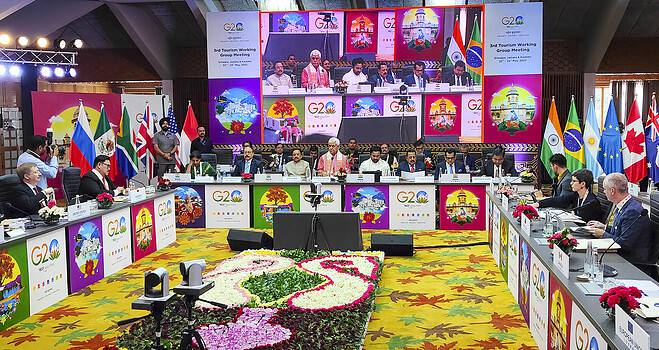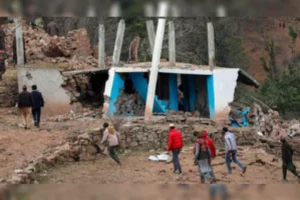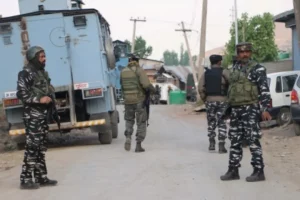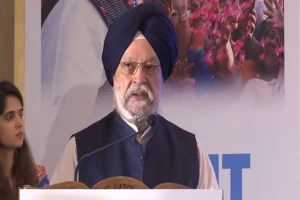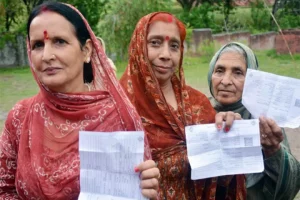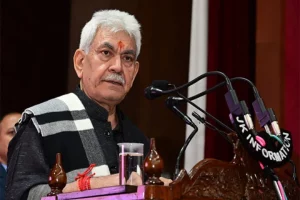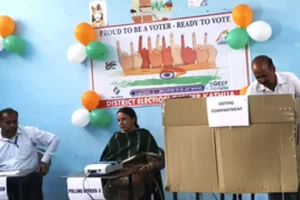Srinagar: In the surveys conducted by government agencies to assess the situation in Jammu and Kashmir during the last 8 years, three particular dates are important. The 5th of August, 2019, when the erstwhile State was split into the two separate Union Territories of Jammu and Kashmir and Ladakh and its special Constitutional status was withdrawn, has been taken as the turning point for a host of reasons.
The way for the change in situation marked by the three-decade-long violent turbulence was paved on June 19, 2018 when the BJP withdrew from the coalition with the PDP and Chief Minister Mehbooba Mufti found herself out of power. Amid reports of horse trading between some opposition parties and even the parties of one or two MLAs claiming the Chief Minister’s seat, then Governor Satya Pal Malik dissolved the Assembly in November 2018.
Nine months later, Union Minister Amit Shah piloted the historic Jammu and Kashmir (Reorganisation) Bill in Parliament. While a Presidential order amended Article 35-A, thereby ending the monopoly of the ownership of immovable properties and government jobs by the erstwhile State’s permanent residents or ‘State subjects’, Parliament terminated Jammu and Kashmir’s special status by way of a fundamental change in Article 370.
So, in the government surveys, August 5, 2019 has been taken as a key benchmark. It is taken as a ‘watershed for a new era of peace, prosperity and development’. The official statistics alone arguably are not enough to map the change.
The beginning of the ‘period of all evils’, started in March 2015 when the BJP grabbed Jammu to establish its base but surrendered Kashmir to its coalition partner—the PDP. The sharing was based on the logic that the BJP had won 25 seats in the Hindu-dominated Jammu and the PDP bagged 28 seats in the Muslim-dominated Kashmir. The BJP also enjoyed the support of its estranged member Pawan Gupta, who returned from Udhampur as an independent and joined his father’s party again. It also got support of two MLAs of the Kashmir-based Peoples Conference. With this addition, it was 28:28 between the BJP and the PDP in the 87-member Jammu and Kashmir Legislative Assembly.
Kashmir’s separatist movement and terrorism was assiduously fought—both militarily and politically—in 1996-2002 when Chief Minister Farooq Abdullah gave a free hand to the security forces and the counterinsurgent Special Operations Group (SOG). His son Omar Abdullah being in the Atal Behari Vajpayee-led NDA government at the Centre, Farooq kept demanding for bombardment on the terror training camps in Pakistan.
On the other hand, the Congress and the Jamaat-e-Islami backed PDP generated a wave of hate and anger against Farooq. The PDP publicly blasted him for his aggressive campaign against the Jamaat, Pakistan and the separatists. It demanded release of all separatists and militants, ceasefire with militants and talks with all of them including Pakistan. Since the BJP, the Congress and the PDP appeared to be on the same page, Farooq’s National Conference (NC) came down from 56 to 28 seats in the 2002 Assembly elections.
With the support of Congress and a hotchpotch of about a dozen independent MLAs, Mufti Mohammad Sayeed’s PDP with just 16 MLAs grabbed power. The counterterror Ikhwan and SOG were finished in the PDP-Congress rule of 3 years while Hizbul Mujahideen and other militant groups staged a spectacular comeback. Both the top Ikhwan leaders, Kukka Parray and Javed Shah, were eliminated in two separate militant attacks.
Mufti brought down the Ghulam Nabi Azad-led coalition government in 2008 when he and his daughter Mehbooba campaigned against the allotment of a small piece of land for the benefit of the Amarnath pilgrims in Sonmarg area. Soon the separatist hardliner Syed Ali Shah Geelani hijacked this campaign and generated a four-month-long shutdown and street demonstrations across Kashmir.
At the end of the year 2008, people rejected the PDP in the Assembly elections. The NC returned to power with a partnership with the PDP’s victim, Congress. Within 5 months, the PDP in an apparent coordination with Geelani and other separatists launched another campaign against Chief Minister Omar Abdullah. First, it was alleged that Farooq and Omar were ‘involved’ in the infamous Srinagar sex scandal of 2006. Omar resigned and resumed work only after he got a clean chit. Sometime later, PDP’s Muzaffar Hussain Baig, apologised to the Abdullahs for the ‘baseless allegations’ he had levelled against them.
Soon the PDP and the separatists generated a violent street campaign against the NC government and India, while alleging that police and security forces had ‘raped and murdered’ two young women in Shopian. It subsided only when, months later, the CBI established that no rape or murder had been committed on the two young women. The CBI framed charges of generating and orchestrating an anti-national campaign against 13 persons, including doctors and lawyers.
Nevertheless, a stronger and more coordinated street turmoil was generated in 2010. Again, the PDP and the separatists played a key role in paralysing the whole of Kashmir for over four months. By the time it subsided, around 100 civilians involved in demonstrations or arson as well as bystanders got killed. Hundreds sustained injuries in the violent clashes.
Thereafter, the Kashmiris turned their back on the valley’s separatists and their patrons and protectors in the government and mainstream politics. The year 2011 witnessed J&K’s best held panchayat elections. All indicators of insurgency and anti-India demonstrations, including encounters, recruitment of militants and civilian killings plummeted down to the lowest levels of post-1990 Kashmir in 2011, 2012, 2013 and 2014.
Notwithstanding many provocations, there was no violence when Afzal Guru was executed, when 6 Muslims were killed in BSF firing in Gool and when a communal clash erupted in Kishtwar in 2013. Order was restored in Kishtwar in just a few weeks.
When Mufti Sayeed became Chief Minister with the BJP’s support in March 2015, Kashmir was all calm. Soon the architect of the 2010 street turmoil, Massarat Alam, was released from jail. It took him just over a month to revive the moribund militancy and a fresh secessionist movement. In April 2015, Massarat was permitted and facilitated to arrange a ‘grand reception’ in Geelani’s honour. Massarat and his associates, mounted on bus roofs, led high-pitch sloganeering in favour of Pakistan, Hafiz Sayeed and azaadi and against India. The crowds outside J&K Police headquarters waved Pakistani flags.
Massarat was soon re-arrested under the BJP’s pressure but the damage had been done. In the next year, a 23-year-old militant Burhan Wani was allowed to emerge as an ‘icon’ on the social media for all separatists and anti-India guerrillas.
(To be concluded….)






